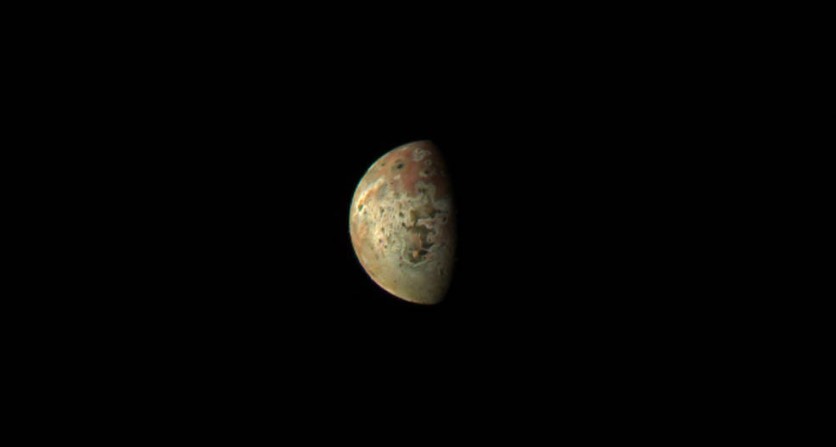NASA's Juno spacecraft is set to fly past Jupiter's volcanic moon, Io, on Tuesday, May 16, marking the closest flyby to date at an altitude of about 22,060 miles (35,500 kilometers), as per the space agency's latest press release.
The solar-powered spacecraft has flown over 510 million miles and has conducted 50 flybys of Jupiter and close encounters with three of the planet's four largest moons - Europa, Ganymede, and Io.

Most Volcanic Celestial Body
Juno was primarily designed to study Jupiter's interior, but its sensors have also provided valuable data on the planet's moons.
Io stands out as the most volcanic celestial body in our solar system, and the numerous flybys conducted by Juno present an opportunity to observe the fascinating variations in its volcanic activity.
Scientists aim to investigate the frequency of eruptions, the intensity of brightness and heat emitted, the connection between individual volcanoes or groups of volcanoes, and whether there are any changes in the shape of the flowing lava.
Juno's array of instruments, such as JIRAM, SRU, and MWR, will play a pivotal role in examining Io's volcanoes and the dynamic interplay between volcanic eruptions and Jupiter's magnetosphere and auroras.
Juno's principal investigator, Scott Bolton, explains that Io is in constant torment as it is pulled gravitationally by Jupiter and its Galilean siblings, Europa and Ganymede.
"We are entering into another amazing part of Juno's mission as we get closer and closer to Io with successive orbits. This 51st orbit will provide our closest look yet at this tortured moon," said Bolton.
"Our upcoming flybys in July and October will bring us even closer, leading up to our twin flyby encounters with Io in December of this year and February of next year when we fly within 1,500 kilometers of its surface."
Uncovering Jupiter's Secrets
During its close approaches to Jupiter, the Juno spacecraft has come very close to the planet's cloud tops, reaching distances as near as 2,100 miles (3,400 kilometers).
By following a trajectory that takes it over the north pole and then exits over the south during these flybys, Juno uses its advanced instruments to explore beneath the cloud cover, studying Jupiter's interior and captivating auroras.
These efforts are dedicated to uncovering the secrets of the planet's origins, structure, atmosphere, and magnetic environment.
Juno's enduring presence in Jupiter's vicinity spans an impressive duration of more than 2,505 Earth days, during which it has traversed a staggering distance of over 510 million miles (820 million kilometers).
The spacecraft embarked on its monumental journey toward Jupiter on July 4, 2016. After 53 days, it undertook its first scientific flyby, maintaining that orbital period until its encounter with Ganymede on June 7, 2021, which resulted in a reduction of the orbital period to 43 days.
Subsequently, the flyby of Europa on September 29, 2022, further shortened the orbital period to 38 days. Following the upcoming flybys of Io on May 16 and July 31, Juno's orbital period will stabilize at 32 days, ensuring an enhanced understanding of this moon and its intricate relationship with Jupiter.
Related Article : [LOOK] NASA Releases a Delightful 3D Animation of Jupiter's Cupcake-Looking Clouds

![Apple Watch Series 10 [GPS 42mm]](https://d.techtimes.com/en/full/453899/apple-watch-series-10-gps-42mm.jpg?w=184&h=103&f=9fb3c2ea2db928c663d1d2eadbcb3e52)



